Creating Walkways Between Raised Beds – 4 Neat, Practical And Attractive Ways To Edge, Link And Unify Your Raised Bed Garden Area
You’ve got the raised beds and the plants to fill them – but what about the bits that link and connect the beds? Here are the best options for walkways between raised beds
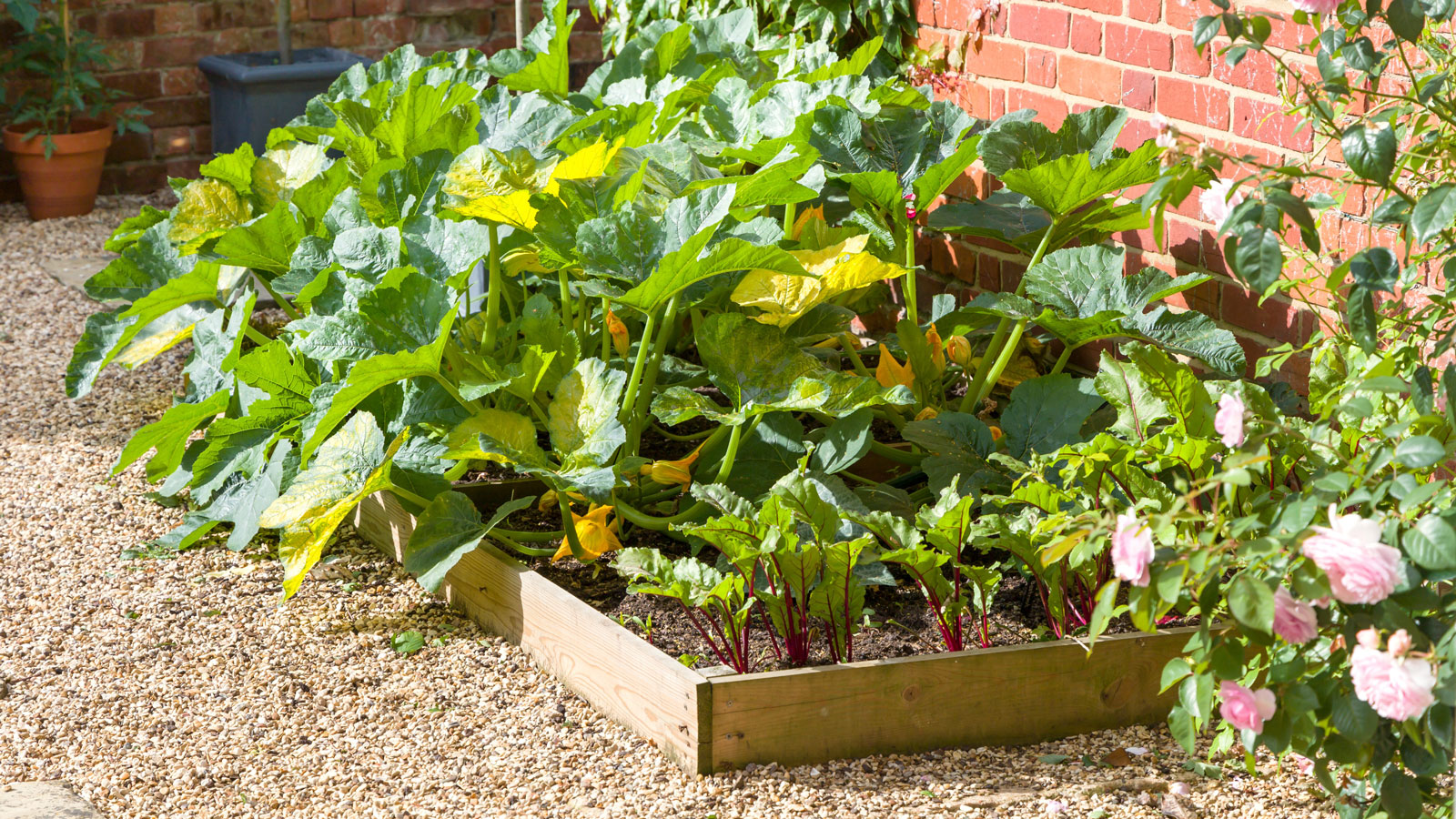

Amy Draiss
If you own a raised garden bed, hopefully you’ve either got some specific plants in mind or have already started growing them. However, while it’s understandable to focus on both the bed and the contents, there is another crucial landscaping element – the walkways between raised beds and the rest of the garden. It’s important to consider what to put around raised garden beds in terms of linking beds, unifying the beds with the other parts of your yard, the overall aesthetic, and also how well you will be able to retard weeds and retain moisture.
If you’re not sure what to put around your raised garden beds, here are some of the main practical raised garden bed ideas to try. Whether you want to add a stylish garden path between raised beds or just help to finish off the look of your raised garden, here are the best options to help you landscape around raised beds.
The Best Pathways around Raised Garden Beds
Before you choose one of the walkway, edging or pathway options here, prep the area around the raised beds. Remove any weeds and make sure you are happy with the consistency of the ground, addressing any compaction or drainage issues. The top 2-3 inches (5-8cm) of soil and dead vegetation need to be dug up. Compost any vegetation and add the dug up soil to the raised bedding area.
Whether you are edging a raised vegetable bed or ornamental bed, the width of the walkway or pathway should be around 2 feet (60cm). Even with raised beds for small gardens, this should be wide enough for good access to all planting areas, and ideally wide enough to accommodate a wheelbarrow. Laying some newspaper or cardboard down before adding your walkway material will kill any grass or weeds in the pathway – this takes 6-8 weeks. Then cover your pathway with a weed barrier or landscape fabric There are some great weed suppressant options available at Amazon. We love ExtraEasy’s Weed Barrier for Landscaping at Amazon.
1. Wood Chips for Raised Bed Pathways
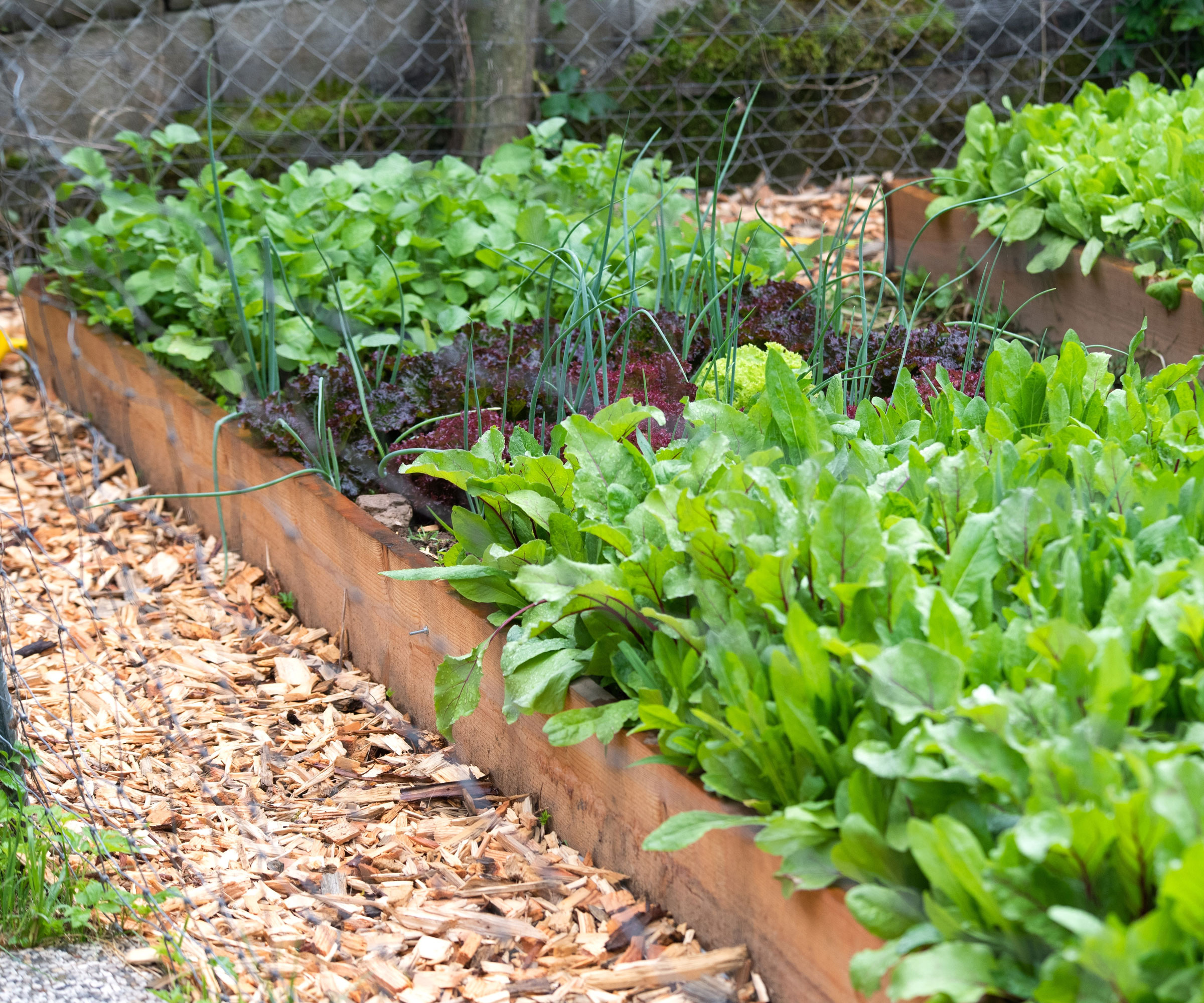
Raised garden bed pathways made out of wood chips are a terrific option for a raised bed layout, especially if you have had a tree felled and chipped. Wood chips or bark pieces aid in water retention and weed retardant, especially when a thick layer is used. Wood chips used as a pathway material are especially great around perennial beds, raspberries and blueberries, and as a standalone walkway. A wood chip pathway creates an earthy, naturalistic look, and looks great against wooden and galvanized beds.
Although wood chips make a very good natural raised bed pathway option, just bear in mind that this material does break down relatively quickly, and as it breaks down, it can foster disease and pests. We love Back to the Roots’s Organic Bark, which you can bulk-buy from Walmart for a reassuringly natural walkway option.
2. Gravel for Raised Bed Pathways
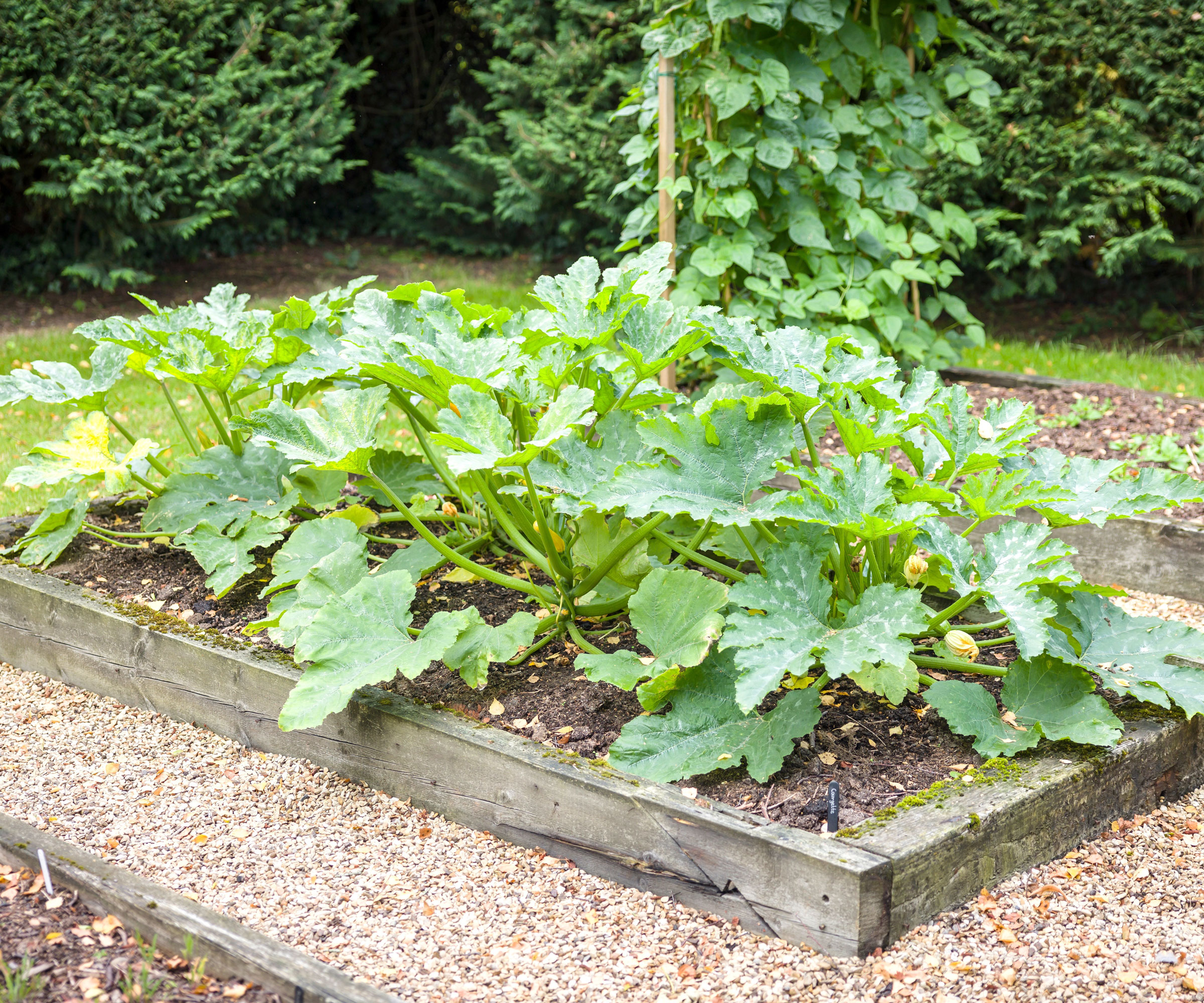
Gravel is another option for use between or along raised garden beds. It has the benefit of being long lasting. However, gravel pathways need something to stabilize them, such as pavers or cement. They should be laid fairly deep and a permeable membrane should be laid down prior to laying the gravel or rocks.
In order to keep the rocks from shifting, the path should be dampened and tamped down, or a gravel binder can be mixed into the stones to bind them. For a bit more money, there is the option of self-binding gravel which contains a mix of dust, sand, and clay. Kolorscape pea gravel from Walmart has a nice natural look and is great for outdoor projects.
Sign up for the Gardening Know How newsletter today and receive a free copy of our e-book "How to Grow Delicious Tomatoes".
3. Slate for Raised Bed Pathways
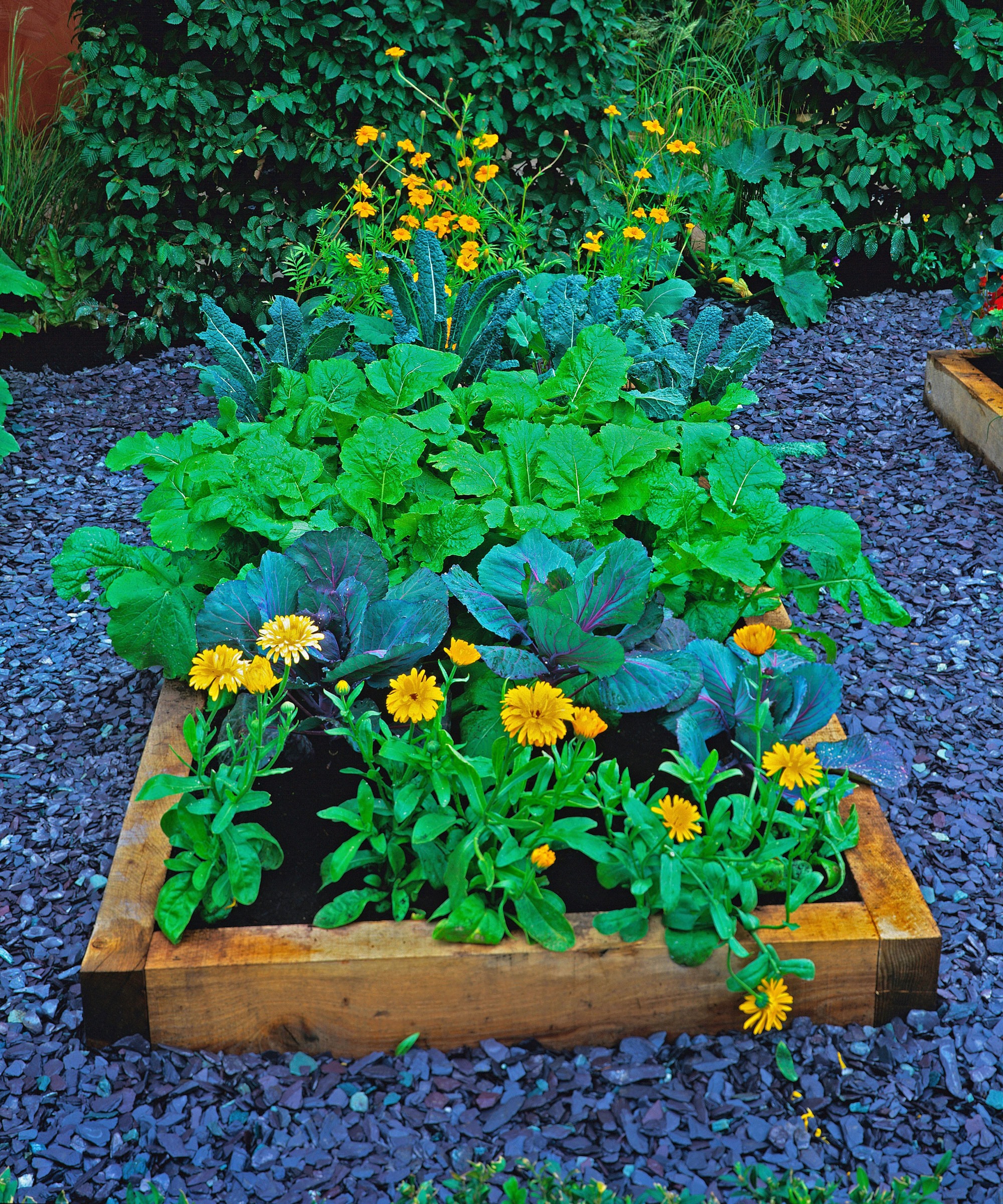
Natural materials like slate somehow manage to look very modern yet also timeless. They are also durable, and can look especially effective when crushed into haphazard pieces or chips. Their darker tones are an excellent contrast to wooden or willow-based raised bed structures, as well as brick or galvanized beds. They can look cheap and cheerful or elegant, depending on your overall raised bed garden design. Plus, slate is great for drainage and dries quickly.
Slate walkways make relatively inexpensive garden path ideas for raised bed walkways. If you know of a remodel or demolition site in your area, it’s worth asking if they have any slate pieces. Prepare your area with a weed-suppressing membrane, then add your slate – ideally, to a depth of a couple of inches (5cm) and try to make sure the slate is distributed as evenly as possible.
4. Using Stepping Stones for Pathways
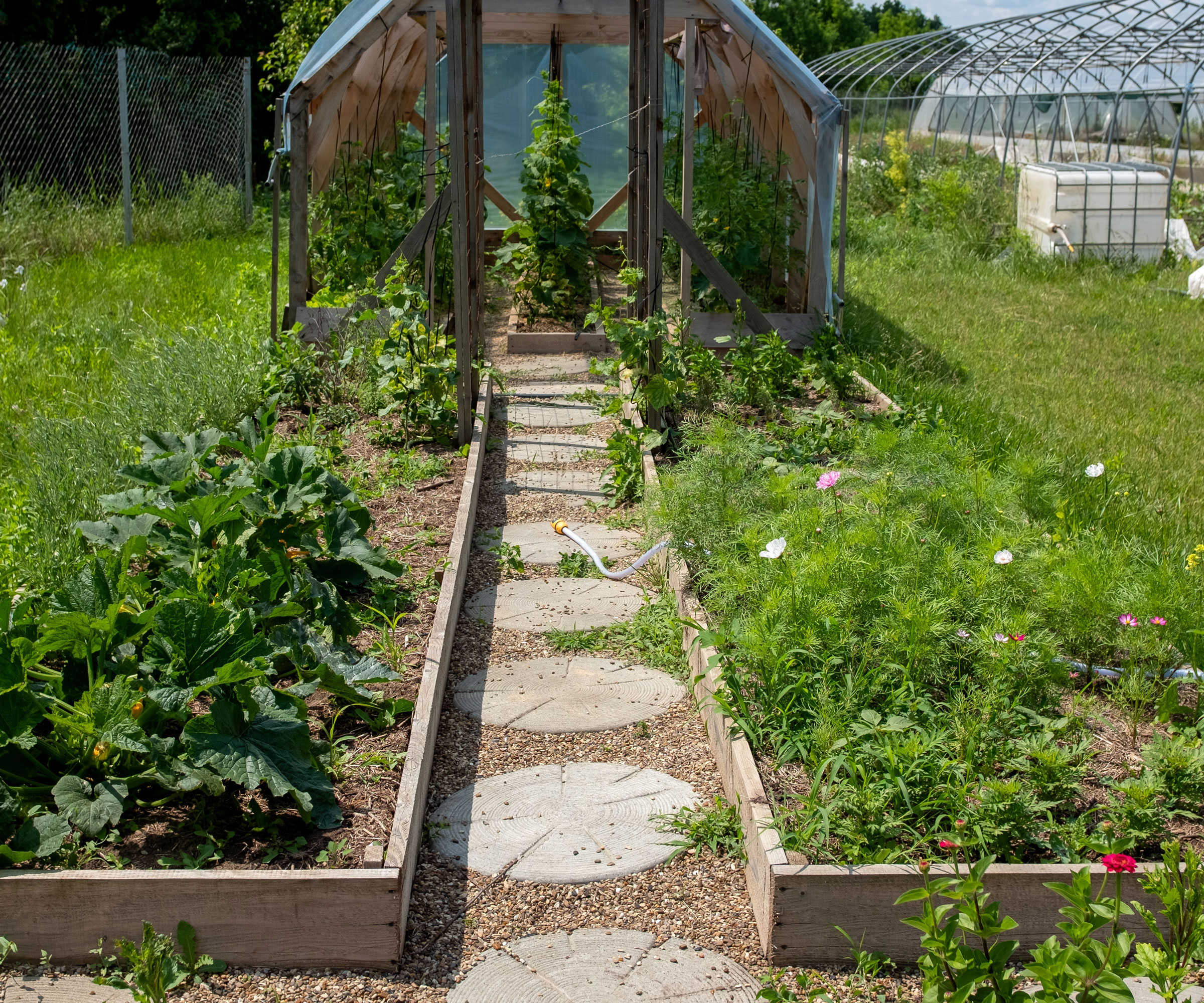
Stepping stones are both practical and very appealing, helping to draw the eye around an area like the raised beds in question and linking it artfully with other parts of the garden. Use natural stone slabs of any shape – geometric, circular, or irregular. Combine with pea gravel to set off your stepping stones, whether you place them in a straight, uniform arrangement around a formal raised flower bed, or a more curved shape to suit a more naturalistic raised bed style.
Prepare the area around your raised bed, as with the other options, by laying weed barrier fabric. You may wish to incorporate a layer of sand under your stepping stones to help with stabilizing and keeping things level. Arrange the stones according to your preference, garden size, and the number of slabs, then fill in the gaps with pea gravel or similar.
If there is a remodel or demolition site near you, ask if they have any broken concrete or other likely materials. There are some great patio paving options online that can help you create an inexpensive backyard oasis linking raised beds to the main garden. You’ll find a range of stepping stone options at Walmart, made from stone, wood, mosaic pebbles, cast iron, and weatherproof plastic. We like Gardener’s Supply’s circular mosaic-style recycled rubber discs, available at Walmart.
This article features products available from third party vendors on the Gardening Know How Shop. Keep in mind that our plant inventory is limited - so if you’re thinking of purchasing, don’t wait!

Amy Grant has been gardening for 30 years and writing for 15. A professional chef and caterer, Amy's area of expertise is culinary gardening.
- Amy DraissDigital Community Manager